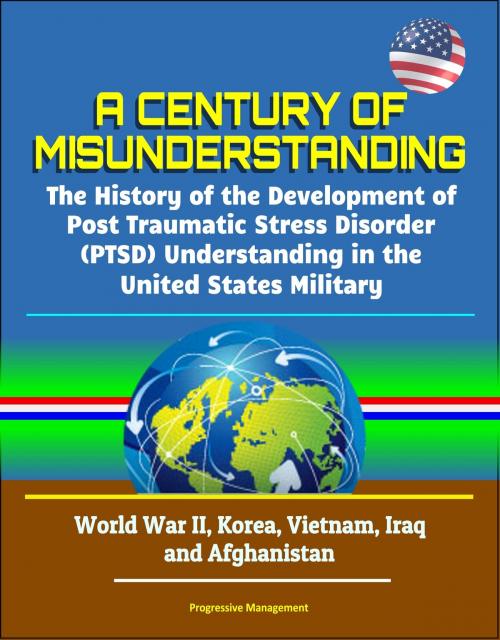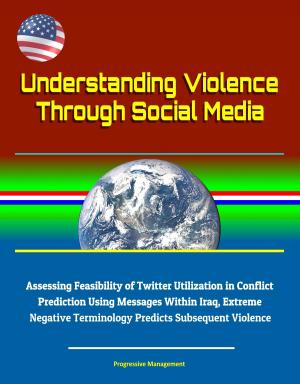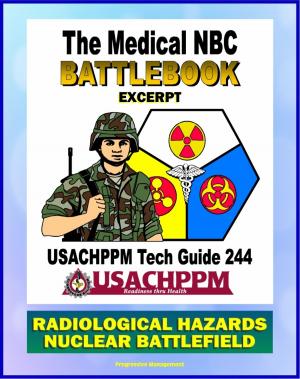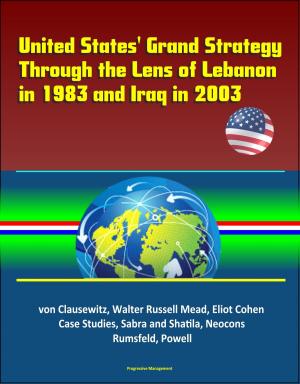A Century of Misunderstanding: The History of the Development of Post Traumatic Stress Disorder (PTSD) Understanding in the United States Military - World War II, Korea, Vietnam, Iraq and Afghanistan
Nonfiction, Health & Well Being, Psychology, Pathological Psychology, History, Military, United States| Author: | Progressive Management | ISBN: | 9780463642443 |
| Publisher: | Progressive Management | Publication: | May 8, 2018 |
| Imprint: | Smashwords Edition | Language: | English |
| Author: | Progressive Management |
| ISBN: | 9780463642443 |
| Publisher: | Progressive Management |
| Publication: | May 8, 2018 |
| Imprint: | Smashwords Edition |
| Language: | English |
This excellent report has been professionally converted for accurate flowing-text e-book format reproduction.
This study examines the development of Post-Traumatic Stress Disorder (PTSD) understanding within the United States Military. The study follows the progression of PTSD from its roots as the concept of WWI shell-shock, through WWII, Korea, Vietnam, and finally the Global War on Terror (GWOT) to its current definition. Additionally, this study examines the impact of the home-front environment to which servicemen and women return to after combat, the development of treatment for servicemen and women suffering from PTSD, and the treatment methods unique to WWII, Korea, Vietnam, and the GWOT eras. In short, the research highlights the development of the disorder, its historical impact on servicemen and women, and its development over a period of nearly a century. More to the point, the study aims to provide a historical context for PTSD, and to help show the improvements in its understanding and management throughout the course of American military history.
CHAPTER 1 INTRODUCTION * CHAPTER 2 PTSD IN WWII AND THE KOREAN WAR * CHAPTER 3 PTSD IN THE VIETNAM WAR AND THE GLOBAL WAR ON TERROR * CHAPTER 4 CONCLUSION * APPENDIX A HISTORICAL LIST OF TERMS FOR PTSD * BIBLIOGRAPHY
Throughout the history of warfare, soldiers have experienced the debilitating effects of post-traumatic stress disorder, or PTSD. From the time of the hoplites of ancient Greece to the present-day soldier, the effects of waging war on individual combatants remains, for the most part, the same. The effect on military forces of PTSD traces its roots back to the mid 1600s, when doctors began identifying commonalities among men who fought in the mercenary armies of the Thirty Years War. While the name of the disorder has changed over time, the diagnostic criteria have remained relatively similar: a person is exposed to an extreme external stressor that can lead to constant symptoms of sleeplessness, anger, agitation, hyper-vigilance, and an inability to concentrate on even the simplest of tasks.
Throughout the course of American history, soldiers have followed a similar pattern in regards to fighting the nation's wars. Soldiers train, deploy, conduct operations, redeploy, and reintegrate into society. While the format of combat deployments remains the same, the manner in which soldiers reintegrate into garrison life and society has changed. During WWII, soldiers returning home from the European and Pacific theaters spent weeks at sea on troop carriers, passing time by reading, sleeping, and discussing their experiences with their fellow comrades. Upon their return, most American servicemen returned to their families and civilian lives.
This excellent report has been professionally converted for accurate flowing-text e-book format reproduction.
This study examines the development of Post-Traumatic Stress Disorder (PTSD) understanding within the United States Military. The study follows the progression of PTSD from its roots as the concept of WWI shell-shock, through WWII, Korea, Vietnam, and finally the Global War on Terror (GWOT) to its current definition. Additionally, this study examines the impact of the home-front environment to which servicemen and women return to after combat, the development of treatment for servicemen and women suffering from PTSD, and the treatment methods unique to WWII, Korea, Vietnam, and the GWOT eras. In short, the research highlights the development of the disorder, its historical impact on servicemen and women, and its development over a period of nearly a century. More to the point, the study aims to provide a historical context for PTSD, and to help show the improvements in its understanding and management throughout the course of American military history.
CHAPTER 1 INTRODUCTION * CHAPTER 2 PTSD IN WWII AND THE KOREAN WAR * CHAPTER 3 PTSD IN THE VIETNAM WAR AND THE GLOBAL WAR ON TERROR * CHAPTER 4 CONCLUSION * APPENDIX A HISTORICAL LIST OF TERMS FOR PTSD * BIBLIOGRAPHY
Throughout the history of warfare, soldiers have experienced the debilitating effects of post-traumatic stress disorder, or PTSD. From the time of the hoplites of ancient Greece to the present-day soldier, the effects of waging war on individual combatants remains, for the most part, the same. The effect on military forces of PTSD traces its roots back to the mid 1600s, when doctors began identifying commonalities among men who fought in the mercenary armies of the Thirty Years War. While the name of the disorder has changed over time, the diagnostic criteria have remained relatively similar: a person is exposed to an extreme external stressor that can lead to constant symptoms of sleeplessness, anger, agitation, hyper-vigilance, and an inability to concentrate on even the simplest of tasks.
Throughout the course of American history, soldiers have followed a similar pattern in regards to fighting the nation's wars. Soldiers train, deploy, conduct operations, redeploy, and reintegrate into society. While the format of combat deployments remains the same, the manner in which soldiers reintegrate into garrison life and society has changed. During WWII, soldiers returning home from the European and Pacific theaters spent weeks at sea on troop carriers, passing time by reading, sleeping, and discussing their experiences with their fellow comrades. Upon their return, most American servicemen returned to their families and civilian lives.















